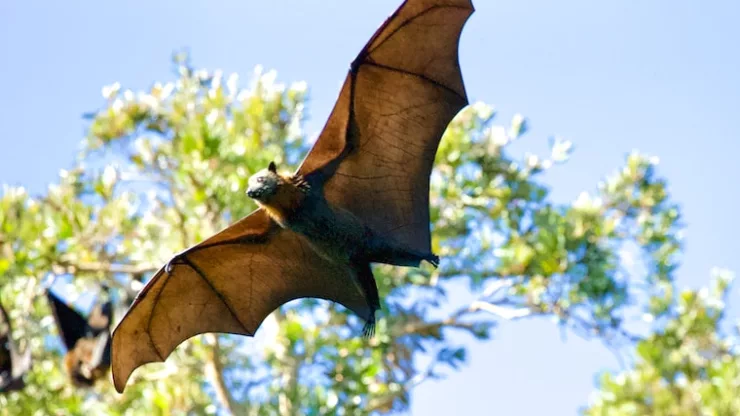Bats are fascinating creatures that have long been shrouded in mystery.
With their nocturnal habits and unique physical features, bats have captured the imaginations of people around the world.
But did you know that many species of bats have adapted to life in urban environments?
In this article, we will explore the world of urban bats and discover why these mysterious creatures are so important.
Jump to Section
Introduction to Urban Bats: Mysterious Creatures of the Night
What are Urban Bats?
Urban bats are bats that have adapted to living in cities and other human-inhabited areas. These bats can be found in parks, gardens, buildings, and other urban areas.
While many people associate bats with caves and other natural habitats, urban bats have shown that they are capable of thriving in a wide variety of environments.
Why are Urban Bats Important?
Urban bats play an important role in our ecosystem.
They help to control insect populations, pollinate plants, and spread seeds.
In fact, many species of plants rely on bats for pollination and seed dispersal.
Without bats, our ecosystem would be greatly impacted.
The Habitat of Urban Bats
Where do Urban Bats Live?
Urban bats can be found in a variety of habitats, including buildings, parks, gardens, and even on bridges.
Some species prefer to roost in trees, while others prefer to roost in buildings.
In general, urban bats prefer areas with plenty of vegetation and food sources.
The Importance of Urban Bat Habitats
Urban bat habitats are important for the survival of these creatures. By providing suitable roosting sites and food sources, we can help to ensure that urban bats thrive.
It is important to remember that urban bats are not pests, but rather an important part of our ecosystem.
Urban Bat Behavior
Nocturnal Habits of Urban Bats
Urban bats are nocturnal creatures, meaning that they are active at night.
They use echolocation to navigate and find food, emitting high-pitched sounds that bounce off objects in their environment.
This allows them to “see” in the dark.
Feeding Habits of Urban Bats
Urban bats primarily feed on insects, such as mosquitoes, moths, and beetles. Some species also feed on fruit and nectar.
By consuming large numbers of insects, bats help to control pest populations and reduce the need for harmful pesticides.
Urban Bat Species
Common Urban Bat Species
Some of the most common species of urban bats include the Mexican free-tailed bat, the little brown bat, and the big brown bat.
These species are well adapted to life in urban environments and can be found in many cities and towns across the world.
Endangered Urban Bat Species
Unfortunately, many species of bats are threatened or endangered.
Habitat destruction, climate change, and disease are just a few of the factors that are impacting bat populations around the world.
It is important that we take steps to protect these creatures and their habitats.
Urban Bat Conservation
The Importance of Urban Bat Conservation
Urban bat conservation is important for the survival of these creatures and the health of our ecosystem.
By protecting their habitats and reducing the use of harmful pesticides, we can help to ensure that urban bats thrive.
Conservation Efforts for Urban Bats
There are many organizations and initiatives dedicated to bat conservation.
These groups work to protect bat habitats, raise awareness about the importance of bats, and conduct research to better understand these creatures.
Urban Bat Myths and Misconceptions
Common Myths about Urban Bats
There are many myths and misconceptions about bats, including the belief that they are dangerous and carry diseases. However, these beliefs are largely unfounded.
In fact, most bats are harmless and play an important role in our ecosystem.
The Truth about Urban Bats
The truth about urban bats is that they are fascinating creatures that deserve our respect and protection.
By learning more about these creatures, we can dispel myths and misconceptions and appreciate the important role they play in our world.
Urban Bat Encounters
How to Safely Observe Urban Bats
If you encounter urban bats, it is important to observe them from a safe distance. Never attempt to touch or handle a bat, as they can carry diseases.
Instead, use binoculars or a camera to observe them from afar.
What to Do if You Find an Injured Urban Bat
If you find an injured urban bat, it is important to contact a wildlife rehabilitation center as soon as possible.
These centers have the expertise and resources to care for injured bats and release them back into the wild.
Understanding Urban Bats: Mysterious Creatures of the Night
Urban bats are mysterious creatures that have adapted to life in cities and other human-inhabited areas.
By learning more about these creatures and taking steps to protect them, we can ensure that they continue to play an important role in our ecosystem for generations to come.
FAQ
What do urban bats eat?
Urban bats primarily feed on insects, such as mosquitoes, moths, and beetles. Some species also feed on fruit and nectar.
Are urban bats dangerous?
Most urban bats are harmless and play an important role in our ecosystem.
However, it is important to observe bats from a safe distance and never attempt to touch or handle them.
How can I help protect urban bats?
You can help protect urban bats by reducing the use of harmful pesticides, providing suitable roosting sites, and supporting bat conservation initiatives.
I’m a nature enthusiast and creator of Metro Wilds and have spent years exploring the great outdoors.
With a passion for environmental conservation and sustainability, I have dedicated my career to writing about the beauty and wonders of nature, as well as the threats facing our planet.
Contact me at [email protected] for assistance.





